Warwick Spinks a.k.a. Willem Spinks a.k.a. Willem Prague a.k.a. Willem van Wijk a.k.a. Wilhelm Pavel

In Enslaved, author Gordon Thomas reported that: "At the start of the year [1991] Britain's Scotland Yard was continuing to investigate reports that up to twenty children in London had been murdered last year in [snuff films] and the video tapes sold on the Continent." Journalist Nick Davies, writing for the Guardian in November 2000, revisited that investigation, which was centered on a group of British pedophiles living in Amsterdam. The investigation revealed that the men were running gay brothels that were essentially 'fronts' for trafficking underage boys, many purchased from the streets of economically ravaged Eastern Europe, and others collected from the streets of London. Prominent among the group of pedophiles were a man named Alan Williams, known as the "Welsh Witch," and another named Warwick Spinks, who according to Davies, "pioneered the trafficking of boys as young as 10."

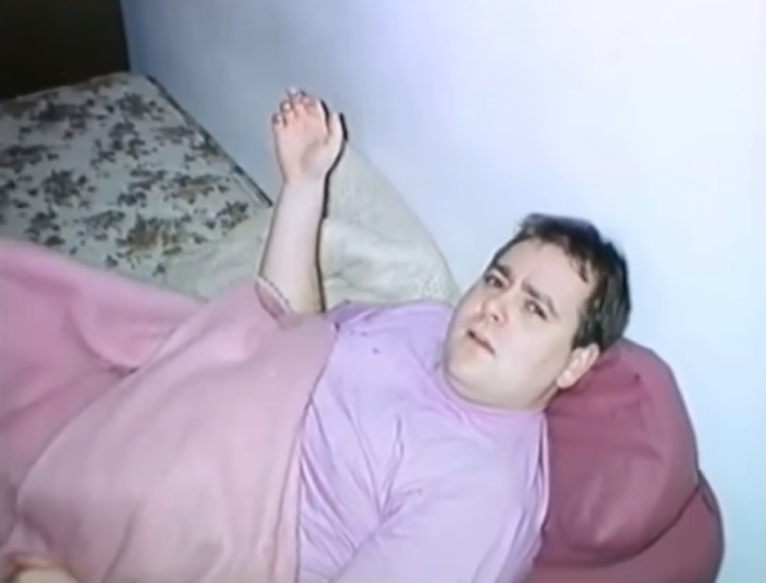
The men used the boys in the production of child pornography and, according to several witnesses, in the production of snuff films. Davies wrote: "not just once but repeatedly, evidence had come to the attention of police in England and the Netherlands, that, for pleasure and profit, some of the exiled paedophiles in Amsterdam had murdered boys in front of the camera." Indeed, witnesses had independently given descriptions of snuff films that were remarkably consistent in the details of the types of torture used and the manner of death, though the descriptions of the victim and the filming location differed, indicating that a number of such films had been made. One witness claimed to have seen five such films.
In the fall of 1998, British detectives flew to Amsterdam to investigate a particularly detailed account provided by a witness. The investigators had in their possession: a detailed description of the apartment where the witness had viewed the tape; the name of the owner of the apartment and videotape; the name of the man who committed the murder; a detailed description of events on the tape; and the first name and approximate age of the victim. With all that in hand, says Davies, the detectives "hit a wall." Dutch police "said it was not enough" to warrant launching any sort of an investigation. By that time, investigators had been hearing accounts of the snuff films for nearly eight years. At one point, they had recruited an undercover officer "to pose as a child abuser and befriend Warwick Spinks." who acknowledged to the officer that he was actively involved in trafficking boys. He also revealed that he knew "some people who were involved in making snuff movies and how they did it was, they only sold them in limited editions, made 10 copies or something, 10 very rich customers in America, who paid $5,000 each or something like that." There is no indication that any thorough investigation was ever conducted, or that any arrests were ever made.
In September 2002, the Chicago Sun Times carried a brief report of two brothers who were arrested and charged with possessing an enormous collection of child pornography. Seized from the brothers were 5,000 photographic images, along with about 100 videotapes and 8mm films. Among this evidence were images of "young girls apparently tortured, raped and killed." The American media has shown no inclination to shine any additional light on the case.
An account of the recent Italian case carried by the Guardian affirmed the existence of snuff films: "Police have discovered a massive international paedophile network selling violent child-pornography videos to clients in Italy, the US and Germany . (authorities are) trying to identify 5,000 people who are suspected of attempting to purchase the videos, some of which appear to contain images of children being tortured and murdered." The UK's Independent, in a follow-up published in November 2000, also confirmed that the seized materials included child snuff films: "Horrified investigators gathered images of more than 2,000 children who were filmed while being abused, raped, and . killed." By that time, close to 1,500 people had been charged in the case, but not - as the Guardian noted - "those in high places who are believed to form a 'paedophile lobby.'"
As in the Belgian, Latvian, and Portuguese cases, there were indications in the Italian case of high-level complicity and a strong belief among the people that the facts of the case were being covered up. And as with the other cases, the Independent reported that the magistrate heading up the inquiry "provoked a furore by denouncing a 'paedophile lobby' supported by politicians which he said openly obstructed the investigators and worked to prevent tougher sanctions for the consumers of child pornography." The New York Times reported in March 1997 that there is "growing public indignation in France and elsewhere about the recurrent reports of kidnapping, rape or incest involving the very young." The same Times report revealed that French police had "detained more than 250 people and confiscated some 5,000 videocassettes" in conjunction with an investigation into a massive child pornography ring. Those detained by police were described as "mainly married professionals." A dozen of them soon turned up dead, allegedly by their own hand.
The BBC filed a brief report on a 1996 case that was otherwise almost completely ignored by the English-language press: "Mexican police broke up an international child pornography ring based in the resort of Acapulco which they said had at least four thousand clients in the United States," (emphasis added). A UN envoy investigating the case said that the "child pornography sometimes involved babies of less than one month old."
In June 1997, the News Telegraph spoke of over 800 French homes being raided and 204 suspects being taken into custody. Among those detained were "more than 30 teachers . and a number of priests," as well as the deputy mayor of the town of Saint Mihiel. By the end of the week, four had committed suicide, including a school headmaster. Three years later, the BBC filed a very brief report noting that a verdict was due "in the trial of more than sixty people accused of possessing child pornography. One of the judges hearing the case said examining the video evidence made him feel physically sick." In a familiar refrain, it was reported that: "the French courts have been accused of attacking the easy targets -- porn consumers -- rather than producers and distributors. And one children's rights group has alleged that senior public figures were among those investigated -- but their cases were dropped before coming to court."
Customer List

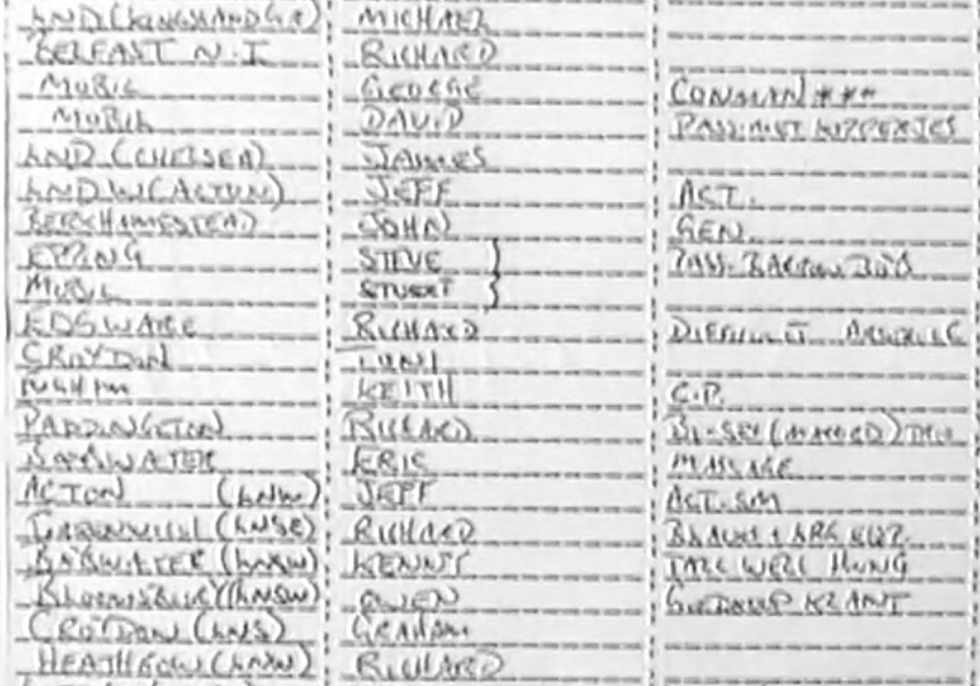


Warwick Spinks is originally from London. Genuine visionary in matters of pedophile criminality, he began his career with a mail order pornography business from Brighton at the age of 17. He then moved to Holland from where he focused on importing children from Eastern Europe. He learns languages very easily and speaks at least French, German, Dutch, Afrikaans, Polish, Czech and English with whatever accent and be confused with a local wherever he goes. Very clever, he turned a grotty brothel controlled by the Dutch mafia into such a success, that the organization couldn’t refuse him any favor.




He was 25 when he earned enough money to buy the Gay Palace of Amsterdam. From 1990, he was selling videos, presumably snuff movies, as they would cost 6000 euros each. His friends Norbert De Rijck and De Souza were running the Temse network (Belgium-Holland-Portugal), with organized holidays including filmed child abuse in Madeira. Warwick was then paying trips to Robert Van Der Naaten, who would smuggle children from Madeira to the Dutch brothels, but he was not sentenced, oppositely as the three others.

As Marcel Vervloesem brought the Zandvoort to the Belgian, French and Dutch justices, Warwick and his friend Edward were arrested in Hoordorp, in the framework on an inquiry concerning filmed rapes, tortures and murders of at least 5 children.
He was then suspected to have a part in the Manuel Schadwald case, because he was of the band he had contact with the Stasi, employer of the missing child's father step: Rainer Wolf who himself now owes a sadomasochist club in Berlin. He also was close to Lothar Glandorf, another of those high rank criminals and in whose brothel Manuel was seen. Furthermore, Spinks will talk of a boy murdered in a Dutch snuff movie who, according to his friend Franck, was nicknamed "Manny" and fitted the description of Manuel.
Warwick Spinks left Holland for England and lived in Hastings, when he was finally charged for abducting and raping two street boys from London and selling one of them to a Dutch brothel. He was jailed for five years and as freed on parole, he flew away, presumably helped by the Dutch mafia, which still won’t refuse him anything.
In 2004, Warwick Spinks was an extremely rich man. He had built "businesses" and bought properties in South Africa, Namibia, Poland, Czech Republic, Slovakia, Switzerland, France and England. An international warrant for his arrest was set in the framework of the kidnapping of a 4 years old child. He lives in the Czech Republic, in one of his numerous properties, earned with child trafficking. He changes appearances, sometimes skinny, sometimes fat, and thanks to his language facilities, melts in the picture.



A very short prison telephone conversation with Warwick Spinks from the Boys Business docu:
Warwick Spinks with friends living the good life not so long ago on a luxurious boat :(


Ron and Reggie Kray with Terry Spinks and Sonny Liston

Temse network (Belgium-Holland-Portugal/Pedophile Madeira Tape filmed in the early 1990's),
@07:12 min


In Temse, cafe Monty appears to have now closed, but the cafe was infamous. It was regularly visited by a group of friends, including Andre Landinois, his friend Bruno Farice, Dirk Tahon (the owner of the cafe), Robert van der Naaten and Norbert de Rijck.




All these video cassettes came in white boxes with a photo on them. He (Dirk Tahon) couldn't really see what was in those photos. The films were not played in the café, but on the floor above. Marion de Boom had told him that those films were often watched on that top floor.




1997 - Dutch journalists dig out a history of sightings of Manuel Schadwald which suggests he had been put to work in a brothel in Rotterdam, run by a German, Lothar Glandorf, now 36. After ignoring complaints for 18 months, Rotterdam police targeted him and found he had been selling hundreds of boys. Of those they could trace, nearly half were under 16.





[EURO-BOYS (18) various sports. boys will spoil you from f 100. Attention!! Sat. 5 Nov. strip-sex show, free entrance. 7 dg/p.week+ esc. One of the advertisements with which Lothar G., main suspect in the so-called HIK case, tried to attract customers.]

List of names for more research: Casper van Maasakkers, Robert van der Naaten, born 14-3-24 in Amsterdam, last known address Kerkstraat 255, N Amsterdam, Norbert Alexander Frans de Rijck, born 6-3-49 in Temse, Holland, last known address Bloodstraat 47, Temse, Holland, Lothar Glandorf (Euro Boys), Henk Sniekers (Young Boys), Warwick Spinks (Worked at Boys For Men), Bert Mullenders
Peter Goetjes (a former Berlin people smuggler)
https://www.facebook.com/peter.goetjes

Ludwig Auster - associate of Warwick Spinks
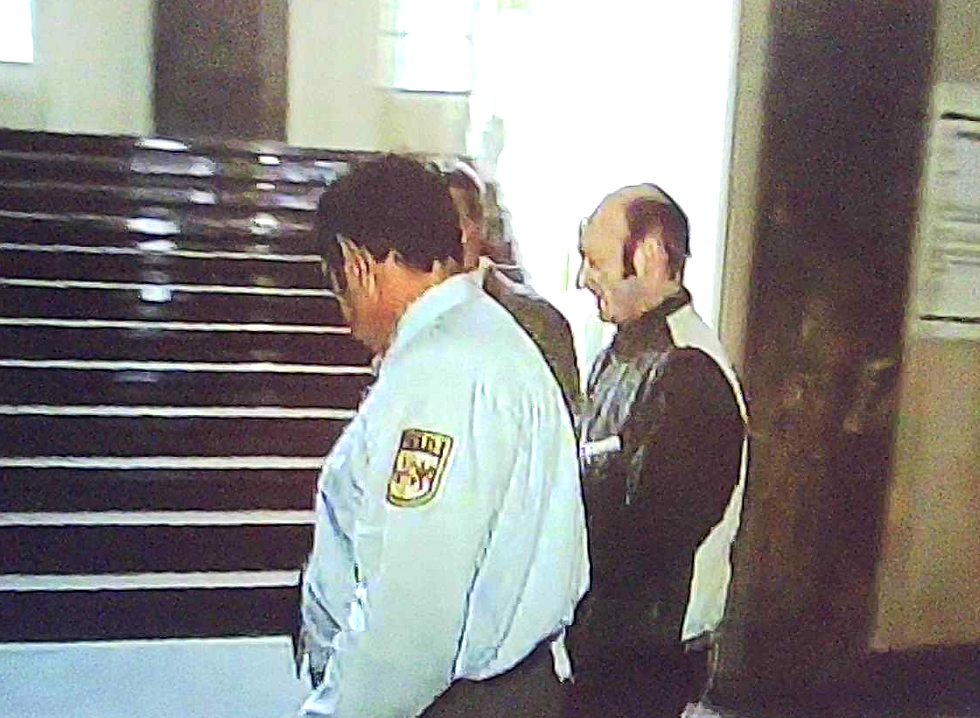
(leaked original notes from investigators on the manipulated Rolodex Affair)
Karel Maasdam a.k.a. Alex Prive a.k.a. Alex Muller (owner of the Bell Boys escort agency & Insulindeweg 106-D)




Boy brothel owner previously spoke to security services
'They went through my entire customer base'
[I was interrogated by Fred Teeven, among others, together with the head of the National Criminal Investigation Department. I asked: shouldn't you draw up a report about that? No, that wasn't necessary, I was told. I thought that was strange. "The years before, I had already been in contact with the secret service, the BVD. The BVD was still very angry with me, because I had talked to American intelligence people. They wanted to know the names of American clients, so that they could never be considered for promotion again, they said. I had them go through my entire client file!
The so-called Rolodex investigation was launched in 1998 after the Amsterdam police received information that high-ranking officials were having sex with underage boy prostitutes. The investigation focused on two locations: Karel Maasdam's boy brothel in Amsterdam and the apartment of a professor (Ger van Roon) who regularly ordered boys. Despite the fact that the Rolodex investigation was conducted in the utmost secrecy, the suspects knew of its existence within a few days. The investigation was therefore stopped, to the frustration of members of the police team.]

Programmed To Kill/Satanic Cover-Up Part 401 (Karel Maasdam - We Are Change Rotterdam) https://rumble.com/v6hlz0m-programmed-to-killsatanic-cover-up-part-401-karel-maasdam-we-are-change-rot.html?e9s=src_v1_upp
Address: Insulindeweg 106-D, Amsterdam. (rumor is the activities have been moved to Insulindeweg 214)
Programmed To Kill/Satanic Cover-Up Part 400 (Holland Boys - Karel Maasdam - Robert Jan Warmerdam) https://rumble.com/v6f1mwa-programmed-to-killsatanic-cover-up-part-400-holland-boys-karel-maasdam-robe.html?e9s=src_v1_upp


Charles Geerts (Scala B.V.) & Videorama - Klaas Bruinsma - ''Child Pornography connection''

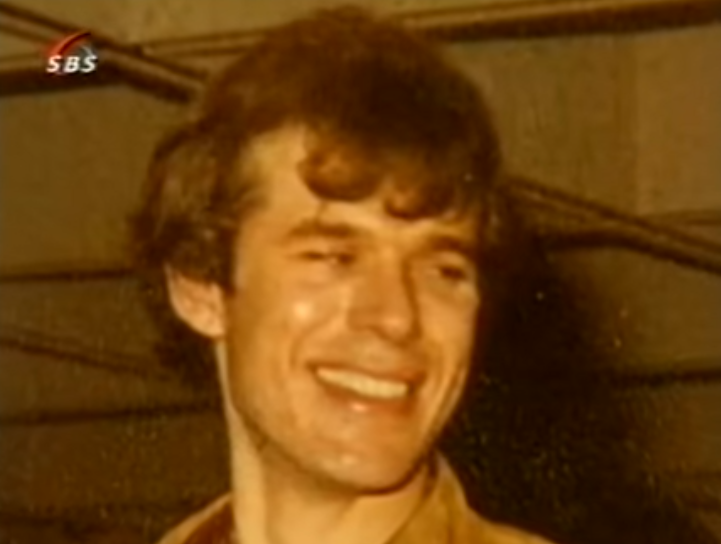

(a very good website detailing the Dutch crime networks interlinked with pedophilia)
https://www.place4free.com/Watamula/Watamula_Demmink2.htm



Hendrikus M.J.S (Henk Smolders) - Cube houses, Overblaak 110, Rotterdam.


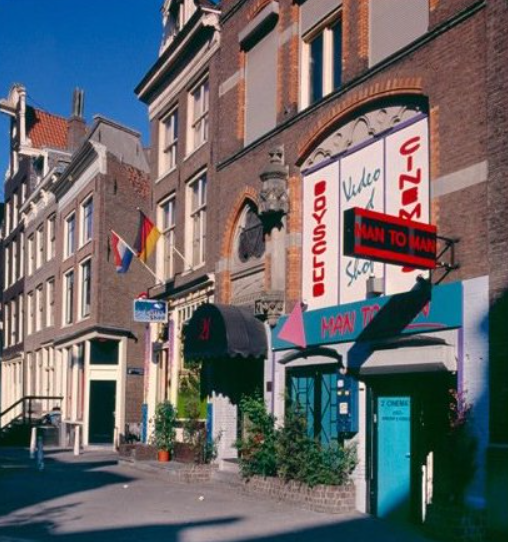
It turned out to be easy to find the boy brothels of Amsterdam. Ask a taxi driver at the central station, walk south for five minutes into Spuistraat and look for the door plaques that make no secret of their business. And there they were. The Boys for Men Club at 44b Spuistraat, the Boys Club 21 across the road, the Blue Boy and the Why Not just next door.
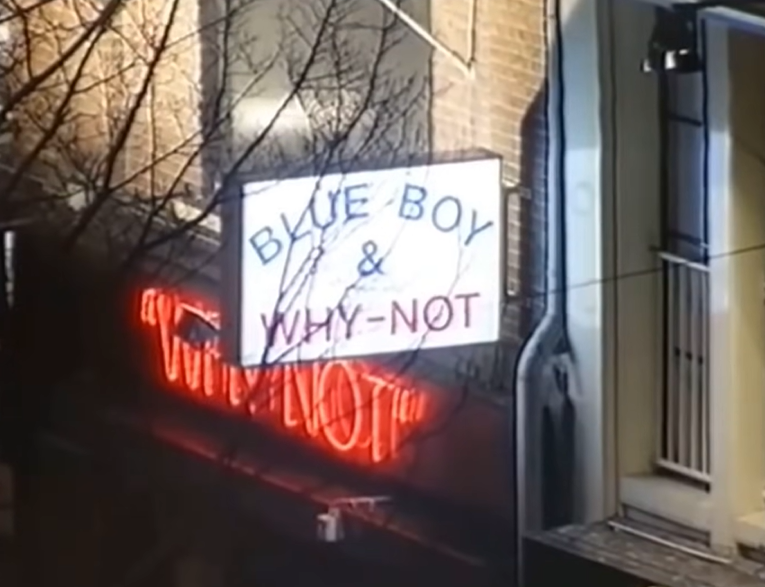


Caravan - mobile home of the Englishman John Stamford, a former Roman Catholic priest from the UK. (publisher of Spartacus). ‘’Boy Van’’ The videotaping of 8mm pornographic films with boys with a duration of ten minutes.
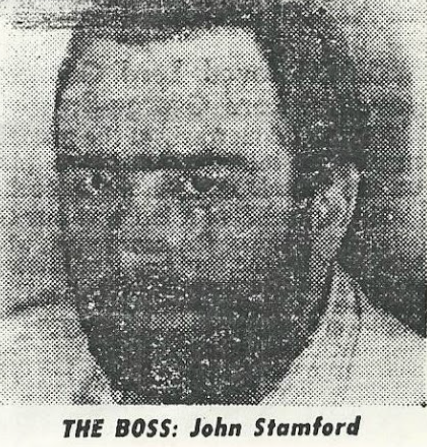


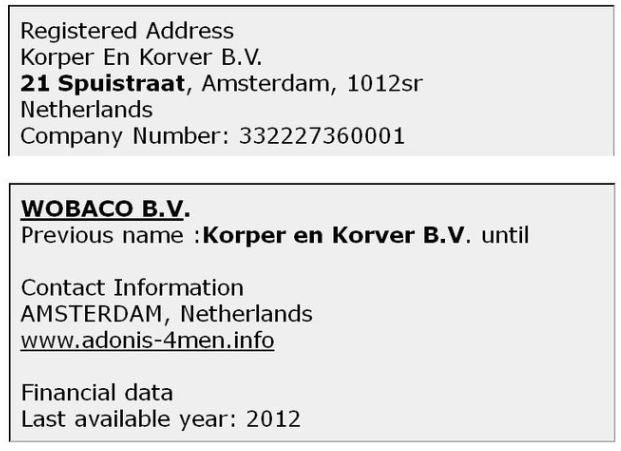







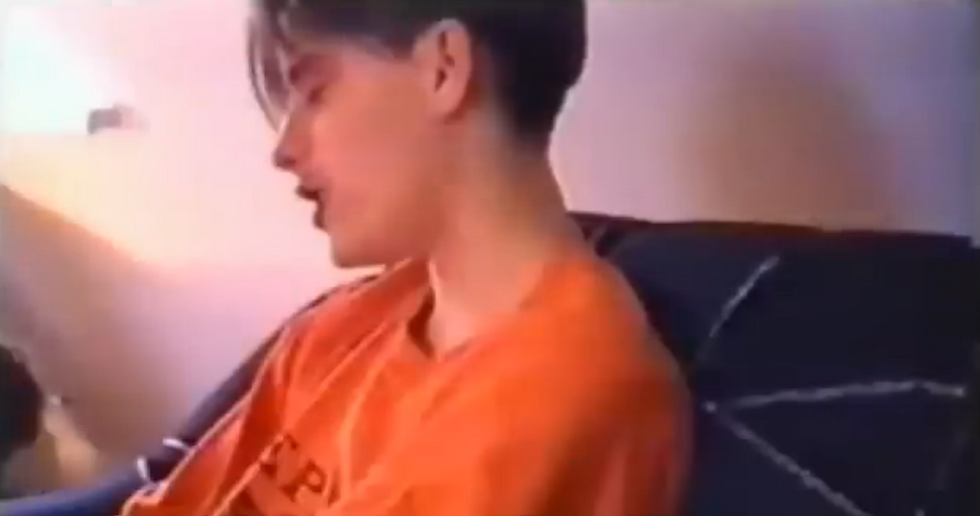


https://thegay.com/videos/996447/sebastian-bleisch-manuel-1-gay-porn-videos/?playlist=4150&pl_page=1

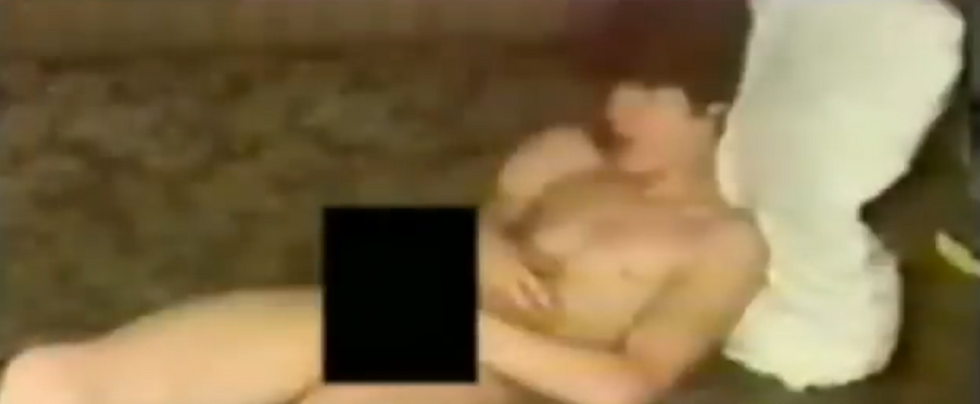
Is this Manuel Schadwald?
It appears that before his disappearance, Manuel Schadwald was seen two or three times at the Bahnhoff Zoo in Berlin, a place where boys engage in prostitution.


In Germany a former liaison officer between the KGB and Stasi named Wanja Götz stated in an affidavit Manuel Schadwald's step-father had been a former Stasi agent named Rainer Wolf. The step-father had been known to frequent a club owned by Lothar Glandorf in Berlin called Pinocchio Bar, and the theory was Manuel Schadwald had never been kidnapped, but rather sold to Glandorf by his step father. Which would fit with Robbie Van Der Planken's use of the word 'escort' in his admission he and Glandorf had taken the boy to Rotterdam. A German politician named Bernd Schmidbauer who had coordinated German intelligence services during the 1990s stated there had been indications of a link between a Stasi blackmail operation and Marc Dutroux.
Pinnochio Bar (a bar allegedly frequented by Joris Demmink)

(Sources: Karl Zero - Le Fichier de la Honte (The File Of Shame)
The ‘Zandvoort File’ revealed a network which dealt in the kidnapping, torture and sexual abuse of children, even infants.
Involved were high-profile names.

(Source: Eye of the Chickenhawk by author Simon Dovey)


Robert Diduca - Robert Mikelsons

A very comprehensive timeline of events: https://thehotstar.net/eyeofthechickenhawk.html (This person also wrote an really excellent summary of the story behind John David Norman, Dean Corll & John Wayne Gacy)









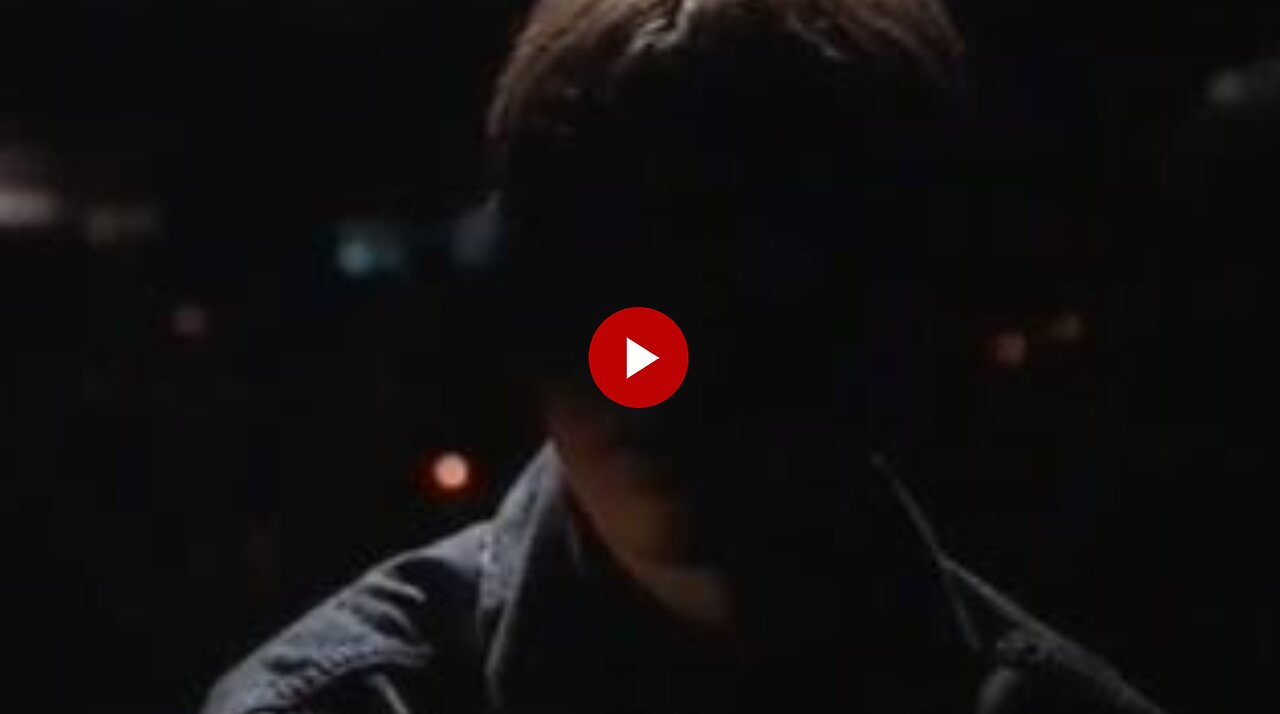



'Sex by age eight - or else it's too late.' - 'Campaigning' slogan of the René Guyon Society
'We have 2,000 suspected paedophiles in our files: just to raid all of them, at our present rate, would take twenty years.' - Senior officer, TO13, August 1989
'What are we going to do with all these paedophiles? We don't hang them, we don't treat them. Right now we just send them out to do it all again.' - Ray Wyre, sex-offender therapist
One such magazine is Thai Lolitas, published by the San Remo Press in Munich and distributed by one of the world's largest adult pornography dealerships, ZBF Vertrieb (based at Schierstein, West Germany, with an annual turnover exceeding £30 million). Thai Lolitas carries explicit hard-core photo-sets of pubescent Thai girls (juvenile prostitutes, according to the magazine's text) having sex with European or American men. The girls are probably above the Thai age of consent but almost certainly below the average European limit of fifteen. Yet the magazine is freely available in sex shops throughout Europe, and is offered for international trans-shipment by a variety of Dutch and Danish mail-order companies.
One fact, however, is beyond question: in 1986, despite official Dutch denials, Amsterdam was undoubtedly a major distribution point for child pornography. Nor was this unusual. The history of the commercial child-pornography industry is inextricably bound up in the legislative history of two European nations - Holland and Denmark.
Strandlodsvej 61 is home to a web of companies known collectively as Rodox Trading. One constituent company is the Color Climax Corporation. Between 1971 and 1979 it was responsible for a major proportion of all the commercial child pornography ever made.
We are now one of the world's largest Super-8 film laboratories and can easily produce between 3,500 and 4,000 copies daily (approximately 200,000 metres) - on a yearly basis more than one million copies. Today we have the benefit of the most modern machinery that money can buy - seven optical machines and four double-spool developing tanks which naturally facilitate continual operation.
A large part of the system is controlled electronically, but ultimately we rely on the skill and attention of thirty-four specialist operators to maintain, and indeed better, our very high quality standards. This has of course cost an unbelievable amount of money, but increasing sales have shown that to invest in quality pays high dividends... This will no doubt encourage an even greater number of satisfied customers.
The importance of Holland as a warehouse for child pornography is impossible to overstate, and the era of commercial Dutch dealing in child pornography will be examined in Chapter Three. But Holland also boasted its own child-pornography producers in the early 1970s; chief amongst them was Joop Wilhelmus. Born on 7 January 1943, Wilhelmus was to become one of the most notorious producers of commercial child pornography and eventually, at least - a distinct embarrassment to Dutch police. Wilhelmus, also known as Wilhelrus and occasionally - as Jomannus Cornelius Christaan is responsible for the most widely traded of all child-pornography magazines - Lolita. Like the Theander brothers' 'Lolita' film series, Wilhelmus's Lolita magazine became almost a universal brand name for child- pornography photographs. (He is also believed to have been responsible for a long-running and particularly unpleasant 'sister' magazine, Incest.) There are no publication dates given on copies of Lolita magazines, but educated guesses place its first appearance in or around 1970 in Dordrecht, near Rotterdam. The magazine, which was to reach issue 55 before it ceased publication in 1985, was A5 format with a colour cover photograph of a naked child - generally no more than five years old. Inside there would typically be a mixture of Victorian and modern photographs of toddlers and pre-pubescent children either displaying their genitals or being sexually abused. By 1972 Wilhelmus had acquired a criminal record for taking indecent photographs of children, but the majority of his material came from paedophiles who had photographed their victims. Lolita frequently included editorial pleas for new child pornography to publish: 'This magazine can only exist if you help us! Send us photos from your collection. 'We desperately need more photos from private files... Those requests amounted to an incitement by Wilhelmus for the magazine's readers to abuse more children and mail him the evidence. Typically, abusers would receive either cash or future issues of the magazine in return for their photographs. Lolita also provided a contact service for its readers, enabling them to advertise both for child pornography and for new children to abuse.
English gentleman, 37, paedophile, wishes to meet a mother with Lolita daughter or a lady with paedophile feelings with regard to marriage. Pretty mothers with pretty young daughters invite enquiries from gentlemen anywhere who are interested in meeting us or in photography.
Single man, 28, wishes to meet girls and boys 9-13 years. Often travelling in Holland and Germany. Photo please. Who can give the address of a good paedophile club, preferably in the district of Copenhagen?
Dutch law, at the time, was strict: pornography was illegal, with no distinction being made between adult and child pornography. But in 1973 the government had proposed liberalisation, restricting the obscenity statutes to the protection of children and controlling the public display of pornography. The proposal was quickly shelved and Dutch law remained unreformed and unrelentingly opposed to pornography. That was the theory. The practice was the precise opposite.
Throughout the 1970s all forms of pornography were freely available in Amsterdam and to some extent - in other Dutch cities. In 1979, after another leg of its fact-finding mission, the British Williams Committee reported: The most important provision relating to obscene publications is Article 240 of the Dutch Penal Code, which makes it an offence to produce, distribute, import, export, transport or display publicly any writing picture or object which offends decency... The penalties provided by Article 240 allow the offender to be imprisoned for up to a year or to be fined up to 6,000 guilders. Confiscation of the obscene articles is provided in addition.
The statute should have made Holland a porn-free zone. Instead, not only was Holland the wholesale, retail and mail- order centre of the child-pornography trade, but Joop Wilhelmus was left free to produce and publish Lolita. It took the Dutch authorities until 1987 effectively to close the magazine by charging him with unlawfully procuring young boys for sex. But the uncomfortable truth remains that they allowed him to publish for seventeen years: he even continued uninterrupted after being declared bankrupt in 1985. In May 1987 Wilhelmus skipped the Dutch equivalent of bail to avoid facing the procuring charge. He is still missing, and to this day US Customs field agents in Europe pick up persistent rumours of a new issue of Lolita being in production either in Belgium or West Germany. If Lolita nr. 56 exists it has yet to be seized by any law-enforcement specialists.
Mail-order businesses like MVI Club, claiming to be the cheapest supplier of hard-core pornography in Europe.
In August 1980 PIE (Paedophile Information Exchange) circulated an Open Letter among every known paedophile group in Europe, Scandinavia and North America, and also to prominent individuals such as Dr Edward Brongersma, Dr Frits Bernard, Theo Sandfort and Valida Davila of the Childhood Sensuality Circle. The letter outlined an ambitious, some would say grandiose, proposal for a new transnational paedophile federation through which member groups would collaborate on material projects and share resources at the same time as working towards a common philosophical platform.
IBS publishes a list of publications featuring mainly preteen boys and girls. Send US$3 or equivalent for a copy. Although never complete, it gives many details (type of magazine or book, country of origin, publisher etc.) Will buy material of interest. IBS Collectors Club c/o Guido Tang, Postbox ..., Rotterdam. That advert was published in a magazine called Boy Love World in April 1986. BLW, based in Maastricht, Holland, was one arm of the loose alliance Steven Smith had called for in 1980. BLW and its linked magazines - Paedo Alert News, Ganymede International and Boys' World-contained a mixture of (non-obscene) photographs of young boys illustrating paedophilic texts and stories, letters and adverts for child pornography. Many of its publishers were ex-PIE members using an ever-shifting web of aliases. Many of them had already been convicted of the sexual abuse of children. The magazines were produced 'for boy-LOVERS, and BOY-lovers -by BOY-LOVERS', and regularly solicited photographs in an uncomfortable echo of Joop Wilhelmus's Lolita magazine. Two of the men behind the magazines are particularly interesting. Frank Torey is the pseudonym of an American paedophile and child molester who fled to Holland when facing charges of sexually exploiting under-age boys. There is still a US warrant out for his arrest. Torey has been listed as a contributor and editor of a variety of the new Dutch magazines like BLW. Curiously, the Dutch government has not managed to locate him.
The April 1986 issue of BLW contained a glowing tribute to Frank Torey for his advice and support'. The editor of that issue was listed as Martyn Simons. Simons had previously edited PAN magazine using the name Roger E. Hunt. Neither was his real name. Simons, aka Hunt, was born Roger Lawrence on 25 February 1946. By 1972 he had begun working for a local council in England as a youth officer, with access to children. He had also been convicted of an indecent assault on a fourteen-year-old boy. He fled to Holland in the early 1980s when the Metropolitan Police first turned their attention to PIE, and joined another paedophile organisation called Spartacus - of which more shortly. He left Spartacus in January 1986 after a row with the organisation's leader, John Stamford. He went on to edit PAN and BLW. Just over a year later he met up with a Swiss paedophile named Beat Meier; together the two men packed a car and, on 24 January, drove it on to the midday Ostend-to-Dover ferry. As the car drove off the ferry and up to an immigration checkpoint officer, Mike Staunton of the Dover Harbour Board, police stepped forward and asked to see Meier's papers. Meier handed over his Swiss passport and Lawrence his British one, but Staunton noticed something in the back of the car, covered by a blanket. He asked Meier to show him. Dimitri Thevenin owes a great deal to Officer Staunton. In the six months prior to his discovery under the blanket on the back seat of Meier's car, Dimitri had been first kidnapped from his home in Paris, then hidden in a flat in Zurich before being shunted around Europe to avoid pursuit by a series of Continental police forces. Dimitri Thevenin was just three years old. Meier tried to bluff it out. He showed Staunton documents purporting to give him custody of the boy. But Staunton remained suspicious. And when he checked all the documents, not only did they reveal Dimitri's 'adoption' to be bogus, but that Lawrence had a criminal record for child sexual abuse. And then there were Meier's own papers. Staunton's checks showed that the Swiss was wanted not only in his home country, but in France, Holland and England for sexual offences against children. The English charge sheet reveals that he had buggered and assaulted a young boy in the Huddersfield area. Staunton ordered a search of Meier's car. In it he found a treasure trove of child-pornography videos and magazines. This was not altogether surprising: Meier had been editor of Libido, a particularly nasty Zurich-based child-sex magazine. The Huddersfield charges revealed the Swiss to have continued making and distributing child pornography. In January 1988 Leeds Crown Court was told how Meier had abused three thirteen-year-old boys and taken photographs of that abuse. He had followed the classic paedophile pattern of befriending their parents and, just like Duncan before him, had persuaded them to agree to the boys going on holidays with him. Meier was jailed for eighteen months after admitting five charges of indecent assault and gross indecency, and one of taking indecent photographs. The sentence was the minimum possible: Judge Raymond Dean QC explained that Meier would be deported to Switzerland as soon as possible. Police in Zurich had already taken out a warrant for his arrest for alleged offences against twelve boys and one baby. Dimitri Thevenin was reunited with his mother after seven months away from home. Paris police were delighted with the results of Staunton's work: 'This affair is part of a huge ring of paedophiles covering several continents,' said Commissaire Nicole Tricart. The men in this racket travel widely and we fear our inquiries will take a long time.' But those enquiries failed to encompass Roger Lawrence. Although the British paedophile was in the car where Dimitri was found, and although he had a previous conviction for child sexual abuse, Lawrence was allowed to go free. No evidence has been brought to show that he knew Dimitri had been kidnapped, though privately Scotland Yard officers are angry that he had not been sufficiently questioned about his part in the case. Lawrence himself now lives in a small town in Kent with a divorced English mother. Letters to his address are not answered by him; instead the woman makes brief but abusive phone calls in response.
What then of Lawrence's former employer, John Stamford, and the Spartacus organisation? Company number 1,700,713, registered at Companies House in Cardiff, belongs to Spartacus International Ltd. It describes its business as 'general publishers of trade and business directories, periodicals, newspapers and journals.' The reality is somewhat less salubrious. The company was formed by John D. Stamford, a 49-year-old homosexual paedophile and former Sunday-school teacher from Lancashire. Stamford left Britain for Holland shortly after he was convicted for sending obscene literature through the post in 1972. Spartacus International Ltd has more than one operation - it is linked to The Coltsfoot Press, which specialises in publish- ing gay paedophilic literature, in addition to being the parent company for what Stamford called 'The Spartacus Club'. In 1986 (international law enforcement is unsure whether the club still operates), Stamford was happy to use it to further the aims of the underground Paedophile Internationale. Club members were invited to apply for special 'portfolios' which included detailed information about where young boys could be hired for sex. The club also offered paedophile tourists the services of its own retained 'couriers', who guided them to children available for abuse. The Sunday Times newspaper took Spartacus up on its word. Reporter Mazher Mahmood received a portfolio detailing child sex in the Philippines. Stamford told him: 'If you are discreet I can guarantee you will get as many boys as you want in the Philippines. Our chaps there will fix it up and all it'll cost you is a meal for the guides and just the equivalent of a pound or so for the kid per night. Within hours of arriving in Manila, Mahmood was met by Stamford's courier and offered two boys, aged eight and fourteen, to abuse. Stamford himself said that he left Britain because the British 'are too pig-headed and can't understand the quality of sexual relationships between men and boys.' Fully four months after Mahmood's article appeared in the Sunday Times, the Dutch police got round to raiding Stamford's luxury home in Baarn, a sleepy little village twenty-five miles outside Amsterdam. Not that Stamford was there to meet them; the British paedophile had moved. Spartacus Internationale Ltd was allegedly at least sold to a Berlin-based publisher, and its coterie of ex-patriate British paedophiles dispersed throughout Holland. But Stamford seems not to have relinquished control altogether: he is still listed as the editor of Spartacus, the international Gay Guide which was sent to all 25,000 club members. And the guide itself still promotes child sex and directs paedophiles to the best sources of boys to molest - albeit rather more discreetly these days. Not all of PIE's active members fled to Europe when the police arrested its leaders. Some have stayed on, reproducing PIE's networks of paedophiles on a reduced scale. Ian Dunn, a 45-year-old local government planning officer, was involved with PIE from its inception. He has set up and assisted two subsequent publications - Rain Makers UK and Minor Problems. Copies of Rain Makers UK from May 1986 reveal it to be a gay contact sheet which also allowed the trading of pornography. Minor Problems was a direct continuation of part of PIE. Minor Problems itself was set up by Peter Bremner before his conviction in April 1983. It billed itself as a new radical review for free intergenerational and child sexuality.' It failed to disclose its involvement with PIE and attempted to attract subscribers through a mixture of amateurish social-work jargon and a bogus claim that its publishers were 'an independent editorial collective, not bound to any organisation or group, not adhering to any dogmatic theories, not limited by preconceived ideas, not working for any profits.' For good measure it gave a false ISBN classification number. Dunn allowed his Edinburgh flat to be used as an accommodation address for the publication after Bremner was arrested and PIE disintegrated in 1984. Subsequent issues of Minor Problems show it adhering to a thoroughly dogmatic theory that children have the right to be sexually abused by adults. Dunn had always maintained that he was not a paedophile whenever reporters asked him about his activities.
The PIE tradition of producing magazines devoted (generally) to homosexual child molestation has continued. In Britain the latest venture is called Ganymede, an overtly paedophilic publication run by one Steven Waters, an ex-PIE member from Swindon in Wiltshire. And in Holland the remnants of both John Stamford's Spartacus organisation and Roger Lawrence's Boy Lover's World produce a glossy large-format publication they call Paidika - the Journal of Paedophilia. Whilst it cannot qualify on its contents as child pornography in its own right, it advertises for companies and organisations that will supply such material. And on its editorial board is that evidently difficult-to-trace fugitive from American justice, Frank Torey. If the Dutch government was serious about its publicly protested commitment to stamping out child pornography and commercial child molestation they would move quickly to find Torey and John Stamford. Both, along with several other remnants of the Paedophile Internationale, could be charged under Holland's 'pandering' statute, which makes it an offence punishable by four years in prison to encourage the sexual abuse of a juvenile for commercial reasons.
The René Guyon Society is just one of a number of such paedophilic front organisations stretching across America. Until 1986 there were three other major groups; at least two of them were actively involved with both direct sexual abuse of very young children and the trading of child pornography.
John Bulloch, the English child molester who abused more than 200 young girls, followed the same path as Tom O'Carroll, and 'found himself' watching just such a video. It was a snuff video from America, only about twenty- five minutes long. In it there was a scene with a girl - she was between ten and twelve years old, I would say. She was being horribly mutilated while some men were sexually abusing her. Her fingernails were pulled off, then her fingers were cut off with shears. She was cut awfully and all the time she was screaming, screaming for mercy, and all the time the men were doing sexual acts against her. Eventually they slit her throat. But then, even in death she wasn't left alone. The men carried on doing sexual acts against her. - It didn't turn me on, it sickened me. But then I don't know how far I would have gone for kicks if I hadn't had treatment. I hadn't reached that pinnacle of murder then, but I could have done; it's quite possible that I could have done. I mean, how far does one go for kicks? I started off with masturbation, went on to oral sex and then intercourse. From intercourse it went to anal sex, then group sex and vibrators. It could have quite easily reached rape, and it could have reached murder.
Thea Puijmbroeck was already dead when they got her to hospital. She died in the bathroom of a room in the Holiday Inn, Amsterdam on Monday, 27 August 1984. Cause of death was listed as a massive overdose of cocaine, many times more than her weakened body could stand. Her body was used to a little cocaine by then; it was also used to being penetrated via every available orifice with a bewildering variety of objects. Other people were used to her body, too. Not just the men - and women - who touched her and pushed their fingers or penises inside her; not just the men who showed her how to take the cocaine. Thea Puijmbroeck was a film star: men all over the world bought 'her' pictures and videos. Thea Puijmbroeck was six years old.
Every major European and American city has a 'Meat Rack'. The locations shift and change with the varying efficiency of police activity, but any night of the week the boys will be there waiting for men.
'Paedophiles,' says Shirley Johnson with a shrug born of resignation and weariness, 'will always find new ways to obtain, abuse and manipulate children. They are always looking for new victims and new methods of getting them.' By 1986 child-pornography specialists working for a number of US law-enforcement agencies had identified just such a new method: computer-based 'bulletin boards'. The 1986 Meese Report noted that: Recently paedophile offenders and child pornographers have begun to use computers for communications. A person may now subscribe to an information service whereby he or she can contact other subscribers. The services are private commercial enterprises which sell access codes to subscribing members. These services offer everything from 'private' communications accessed through individual code words to conference calls. The communications may also take the form of a 'bulletin board' message to which any other subscriber may respond.
(Source: Child Pornography: An Investigation by author Tim Tate)